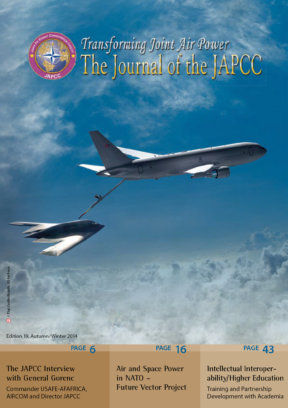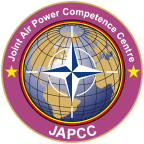Understanding the Needs of Today’s Military Missions
Modern threat scenarios in conflict regions are increasingly focusing on issues such as crisis management, asymmetric threats and international terrorism. This, plus the resulting shift in focus towards stabilization operations, means that the range of duties and objectives behind military response capabilities is now broader than ever before. Take, for example, the combination of operational and political influence in modern operations, which places a number of new requirements both on military personnel and on the systems and equipment used. Within this context, this tendency is exacerbated in the field of communication and communication information systems, as they are subject to the constant change that comes from the dynamic advancement and development of technologies.
National and NATO-wide concepts such as network-enabled operations (embodied by Germany’s NetOpFü strategy) and the NATO Network Enabled Capability (NNEC) programme are meant to establish a framework that will make it possible to meet the needs of today’s complex and dynamic military conditions. The goal is to enable military personnel to flexibly respond, on-site, to the situation at hand while using all military means (Combined and Joint) at their disposal, all within the context of the relevant overarching interests. However, the transfer of decision-making authority to subordinate units that this entails (‘power to the edge’) will require a realigned information policy according to which the required information will no longer be provided in a procedurally optimized manner (push principle), but will instead be provided in a prepared data pool for targeted access (pull principle). Moreover, the ‘need-to-share’ paradigm will pose an additional challenge in terms of the relevant requirements, procedures, and information technology.
Taking Advantage of the Framework for a Service-Oriented Approach
In order to be able to smoothly transition to a modern, global strategy paradigm, the Armed Forces of all NATO member countries will need to change in a coordinated and perfectly fine-tuned manner. In fact, the structural reforms that Germany’s Federal Armed Forces are currently undergoing are a prime example of this, as they are meant to bring about a greater focus on likely international mission scenarios. However, the impact that this will have on the corresponding organizations and processes presents a certain degree of uncertainty. Of course, technology – intended to play a supporting role – further contributes to the highly dynamic nature of this complex environment due to the breakneck speed at which it is developed. But within this context, it is important to note that the last few years have led to the now-conventional wisdom that technology by itself is not really the deciding element, and that the ideal combination and interaction between people, processes, and technology is what really makes a difference.
Using a service-oriented approach is the technological answer to the requirements of future NATO-wide missions. The fact that it can be applied with enormous flexibility allows for the continuous changes that military strategy and procedures will continue to undergo, all without losing any of its usability to users. All this being said, it is important to note that a number of important challenges are what define Frequentis’ current understanding of ‘Communication as a Service’.
Recognizing and Facing Challenges
Military missions need custom solutions that not only cover the entire range of needs involved in each individual mission, but that are also able to adapt to the dynamic changes in that mission’s environment. In terms of command and control systems in general, and communication systems in particular, this poses a series of strict and demanding requirements – especially with regard to quality and availability. The main challenges that will need to be overcome in the future are those related to providing enhanced interoperability with other systems, improving integration capabilities for integration into existing system networks, meeting comprehensive IT security requirements, and ensuring the greatest possible cost effectiveness.
Interoperability
Real and highly likely mission scenarios require information and communication systems to be networked across departments and military branches at a multinational level. Moreover, the resulting wide network needs to provide reliable, integral, and transparent access to a variety of transmission media and services, efficiently networking radio equipment with a variety of waveforms, satellite communication systems, trunked radio systems, and infrastructure-based telephone and data services. The reliable, high-availability communications found in today’s air-ground communication networks between air traffic control and aircraft could serve as a role model within this context. In addition, it is important to mention that the key to achieving success on the path to global ‘plug-and-communicate’ interoperability would be relying on standards such as the Internet Protocol. However, it would also be necessary to take specific standards and legal regulations (e.g. ICAO) into account in certain subdomains due to the special requirements and general conditions involved.
Integration Capabilities
The way in which communication and information systems are being increasingly merged into a single system is a paradigm shift in the industry. And a very relevant one, as the conceptual design and actual implementation of communication systems is precisely where ‘capability-based thinking’ will bring about sustainable and effective changes. In fact, the wave of the future is to leave dedicated, monolithic communication systems behind, instead opting for integral, architecture-based solutions that make it possible to meet communication requirements much more effectively. However, there are also other significant aspects to take into account, such as the increasing importance of user interfaces in environments in which security is critical, as well as within the context of Germany’s NetOpFü network-enabled operations strategy. In this regard, the focus on a joint operational picture and the increasingly greater orientation towards processes will change the way Armed Forces communicate. Ultimately, of course, the goal is to make things easier for users, speeding up mission processes while simultaneously reducing the amount of errors. And when all is said and done, it is clear that today’s worldwide missions and demanding mobility requirements require more flexible system architectures and a wider range of system components, especially at workstations. Because of this, open standards must become part of the approach used to improve platform independence. Furthermore, special requirements must be considered to make devices more ruggedized and secure as well as to reduce hardware footprints.
IT-Security
The (software-oriented) merging of communication and information systems, together with the accompanying (hardware-oriented) gradual replacement of dedicated monolithic communication systems, is making many of the physical security barriers we have long taken for granted disappear. Network infrastructures and end devices are now used commonly by various systems in a comprehensive IP network, increasing the vulnerability of local networks and the danger of outside attacks. This, combined with the user need for (sometimes worldwide) reliable and efficient access to a variety of security domains, yields complex multi-level security environments. All this against the background of a constantly growing risk of attacks, which is a natural result of the greater role that software plays in systems, the use of commercial operating systems, and the widespread availability of hacker tools and malware. This, of course, is why the IT security aspect needs to play a significant role in projects that revolve around designing and implementing systems.
Cost-Efficiency
The terms ‘Smart Defence’ and ‘Pooling and Sharing’ are prominent examples of the cost-cutting measures currently being taken by Armed Forces across the world – especially in Europe. One of the dominant aspects of these measures is the demand for solutions already available on the market, with creative solutions based on off-the-shelf technologies displacing traditional investments in the long-term, cost-intensive development of specific military systems. The trade-off is that users accept that this will make it impossible to meet all their requirements completely (80 % solutions). However, the fact that system environments will be integrally harmonized as part of this process will make it possible to achieve positive standardization effects and economies of scale, resulting in investment and logistical advantages. In addition, the gradual convergence of platforms and the use of network infrastructures by various ‘logical systems’ will result in further cost reductions and increased efficiency. Within this context, Quality of Service (QoS) management will pose special challenges in regard to high-availability communication systems. For starters, cost assessments will no longer refer exclusively to procurement costs, but will instead involve a comprehensive life cycle cost analysis. The result? The decision will now be between buying systems outright or the alternative of obtaining guaranteed access to capabilities and services based on operator and carrier models.
Proactively Developing Solutions
The challenges behind the communication and information systems of the future will set the stage for future trends not only in NATO’s Armed Forces, but in the defence industry as well. On one hand, Armed Forces will have to hone their existing skills when it comes to evaluating solutions and systems, and will also have to make their procurement processes much more flexible. On the other, the industry will have to assume greater responsibilities and proactively develop capability- and service-oriented solutions. This will have to be accompanied by greater engagement and dialogue between Armed Forces and industry so as to establish a framework that will make it possible to meet the strict and demanding requirements of the military in the future.
Germany’s Federal Armed Forces and the Industry – Building a Strong Team Together for Decades
For 25 years, Frequentis has proven to be a reliable partner of the German Federal Armed Forces and has consistently designed, supplied, and operated communication solutions for them, especially in the field of military air traffic control and air defence. In addition, the company has amassed a vast pool of comprehensive know-how and experience as a result of its long-time work with the Armed Forces of other NATO member countries, including the Royal Air Force, US Navy and Polish Air Force, just to name a few. Within the context of the critical security requirements involved in these operations, truly understanding ‘Communication as a Service’ means to understand the relevant users’ processes and their communication needs, as well as to effectively integrate specific communication systems into the relevant system networks. To do this, an integral, comprehensive, and structured analysis is used from an architecture perspective in order to identify (together with the relevant users) the functionalities and interfaces that will appropriately cover the users’ communication needs across all their systems.
Outlook and Summary
As of this writing, future-proof solutions are already using the ‘Communication as a Service’ paradigm as a basis, and the need for monolithic, dedicated communication systems will disappear in all but the most specific of areas. Meanwhile, the guideposts for communication services that can be effectively provided as part of a service-oriented, harmonized integral system are being set by the search for greater interoperability, deeper integration, improved IT security, and increased cost effectiveness. Architectures, such as the Frequentis Airbase Architecture, can act as important catalysts within this context.
This means that, in today’s operation environments, the concept of ‘Communication as a Service’ is no longer defined solely on the basis of system-related developments. Instead, it describes the concept of specifying operationally driven communication requirements, using the required functionalities, in close coordination with the relevant users and taking the relevant processes into account, as well as of effectively integrating these requirements into the relevant system environments. Innovative, multimedia, standardized (e.g., based on the Internet Protocol) user interfaces that make it possible, first and foremost, to communicate in a context-specific manner based on the relevant operational picture and the process at hand are becoming increasingly important within this context. Moreover, the change in the definition and provision of ‘Communication as a Service’ is resulting in a decrease in the importance of hardware, with flexible software solutions that can be quickly implemented taking over the spotlight instead.
Due to the structural and procedural restructuring processes they are currently undergoing, as well as to the development of new IT strategies, NATO’s Armed Forces are in an ideal position to meet and overcome the challenges involved in state-of-the-art communications. However, being able to successfully implement the required IT systems will require even closer cooperation between these Armed Forces and industry in order to achieve an ideal combination between people, processes, and technology and optimize their interaction.












